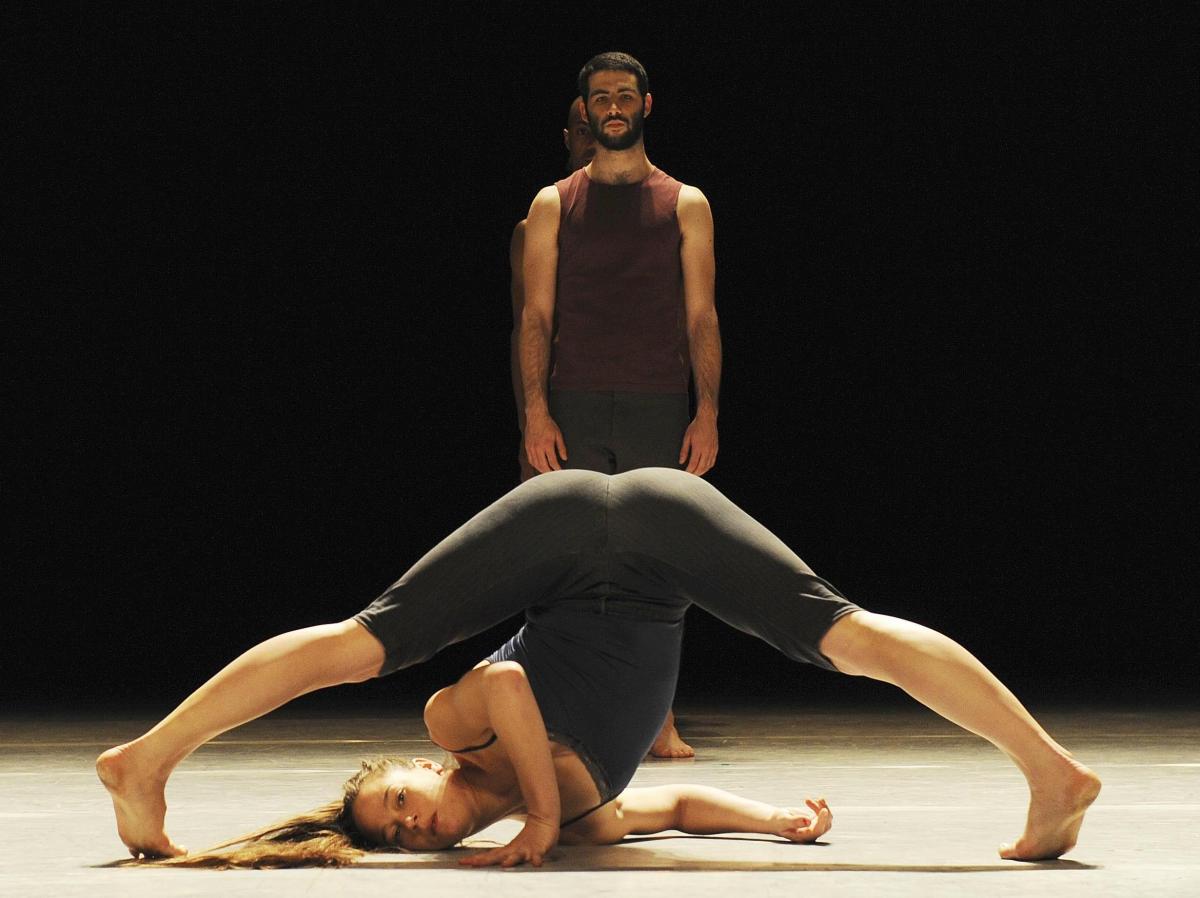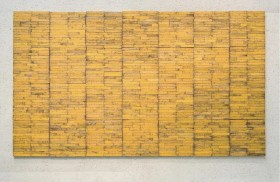The Batsheva Dance Company, founded by Martha Graham and Baroness Batsheva De Rothschild in 1964, has come a long way, both in respect of their touring activities (and let’s face it, Australia is a long way from just about everywhere!) and in its development into a world class contemporary dance company. Graham’s influence is still apparent, but that could be said of almost any contemporary dance outfit. It’s what Batsheva has done with Graham’s influence that is amazing.
Ohad Naharin has been Artistic Director since 1990. As well as working closely with Graham, Naharin had created works for his own New York-based ensemble and for other companies, including Jiri Kylian’s prestigious Nederlands Dans Theater. Gradually, his own choreographic style emerged. It is one that is founded on fluidity, especially in spinal movements. The company’s repertoire is now firmly based on Naharin’s work, not only choreographically, but in his unique system of training, known as Gaga, which involves spoken instructions in layers on the dancer’s body: one might start by using the knees, for example, and the next instruction might require the addition of a specific hand movement, and the next, a shoulder movement, until many body parts are all in play at once. This influence is obvious throughout the program that is Deca Dance.
Deca Dance, in fact, is a resumé of Naharin’s work. It starts while the audience is filing in, with the incredibly flexible Shamel Pitts dancing in a business suit. It is at once clear that the Naharin method builds enormous flexibility and stamina.
A loud rendition of ‘Hava Nagila’, the one Israeli song that is known worldwide, announces the entrance of Pitt’s colleagues. The music changes, and it soon becomes apparent that they can all perform the same incredible spinal feats, and they continue to do so in unison and in canon, even singing one line of each verse of the accompanying song. The closing verse involves showers of clothing – off come the business suits and the starched white shirts, and the shoes and socks, which are collected by some of the cast who leave the stage to a smaller ensemble, left clad in what looks like grey flannel underwear. The dance continues, giving various dancers short solos, duos, trios and more. A particularly lovely duo in compound triple time leave the audience spellbound, only to give way to a frenetic piece that features hats.
At one point, a dozen dancers leave the stage and gather willing partners from the audience. The chosen ones enter in to the spirit of the thing with gusto and leave the stage laughing. They will forever be able to say truthfully that they have appeared with the Batsheva Company!
A change of pace: five men, clad in what look like Thai fishermen’s trousers, paint their faces and torsos. One man does not join in at first, but the silent message goes out – ‘You must do this if you want to be one of the gang’. But the rugged individualist soon leaves the gang and washes off his stripes. A powerful comment on the plight of the artist in everyday society, this might be the most memorable item on the program for many.
A section for eight women in unison gives way to a counting game, such as children play, with each number indicating a movement. Gaga in action – the way the layered moves turn into a dance is breathtaking. And finally, the entire cast join in an intricate piece that gives every dancer a chance to shine and also to demonstrates the amazing teamwork that characterises a really good dance company.
And Batsheva, friends, is indeed a Really Good Dance Company, and is highly recommended. Overall, it is an excellent program, although one or two sections are perhaps just a shade too long. There is a fashion at present to omit the interval and run an entire show over an hour and a quarter or even an hour and half, and for many of us, that is just a bit too long unless there is a great deal of variety. A film, a musical, or a play with changes of scene, might get away with it. Most dance shows will not, unless the costumes are particularly spectacular and change frequently – and that is not Batsheva’s style.
This program runs only until Wednesday, 12 February, but there is to be a second program, titled Sadeh21, from Friday 14 February until Monday 17 February.
Rating: 4 ½ stars out of 5
Deca Dance
Batsheva Dance Company
Choreographer and Artistic Director: Ohad Naharin
Costumes: Rakefet Levi, Sharon Eyal
Lighting: Avi Yona Bueno (Bambi)
Heath Ledger Theatre, State Theatre Centre of WA, Cnr Roe and William Sts
Perth International Arts Festival
www.perthfestival.com.au
9-12 February






